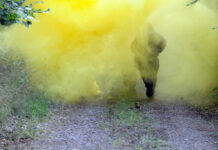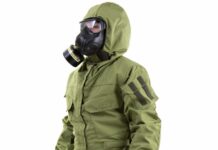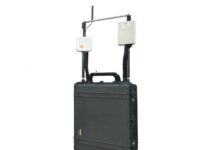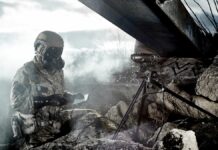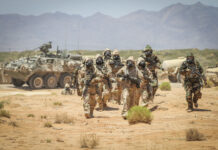Chemical, Biological, Radiological, and Nuclear (CBRN) threats are considered differently from conventional “kinetic” threats for many reasons, both in the defence and counterterrorism settings.
A key principle behind categorising these threats differently is that they cause injuries and illnesses significantly different from bullets and bombs. Until the 20th century, disease generally killed more soldiers in wartime than weaponry did. Indeed, the present COVID-19 pandemic shows us all that sickness is still something to be reckoned with.
Military medicine has a century of experience in dealing with CBRN threats, starting with the First World War. Medical care in a military context ranges from self-aid and aid for one’s fellow soldier through military medics in the field, ambulances and other forms of medical evacuation, and various tiers of military hospitals. Emergency medicine in the civilian world is often divided into pre-clinical (ambulance crews and paramedics for example) and clinical (hospitals) spheres. For purposes of discussion, “responder” can include a complex and varied number of roles. A lengthy discussion on how medical care is organised does not serve the reader of this magazine terribly well, so this article will discuss both CBRN medical provision in the field (before hospital) and in definitive care settings such as hospitals.
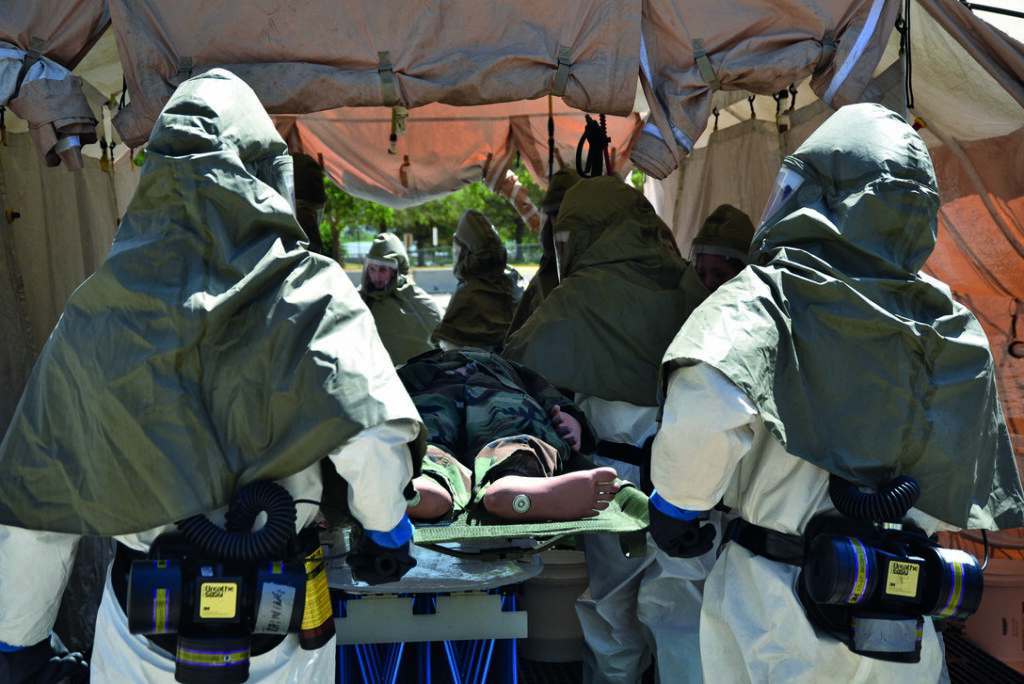
Generally, new advances in medical countermeasures to traditional CBRN threats move slowly. The budgets and scientific labour devoted to these lines of inquiry are dwarfed by the efforts of the big pharmaceutical firms and academia. Simply put, nerve agent treatments are competing with cancer, COVID-19, and diabetes treatments for money, and will always lose out in such competitions.
Field care in CBRN situations, whether military or civilian, differs according to threat. In chemical situations, there is much that responders can do to help the injured. In radiological situations, field care is usual limited to decontamination. In biological incidents, there is often no care needed or given in the field as the incident only presents itself days after the attack. As such, given both the broad trends and the specific parameters, new developments in this segment are often scarce.
PPE
Personal protective equipment (PPE) has always been a consideration in CBRN medical care. There is no point in trying to render care in a contaminated environment if the responders are themselves injured by doing so. In modern militaries, field medics are usually equipped with the same CBRN protective masks and clothing as the rest of the military. CBRN protective equipment specifically tailored for medics seems rare, with the exception of thinner gloves.
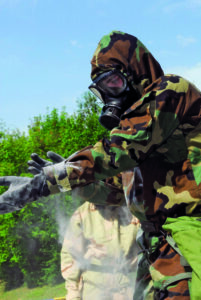
In the civil sector, the situation varies widely. There are not many efforts to provide full CBRN kit to emergency medical providers. However, the COVID-19 pandemic has proven the need for PPE for purposes of infection control. Such PPE, like N95 masks and gloves, is generally good for the majority of “B” and “R” scenarios, even if it provided only limited value in “C” scenarios. Efforts to improve PPE use and stocking for COVID-19 will have some value in the event of CBRN incidents.
There have been some long-standing (pre COVID-19) efforts to have some medical personnel train especially for work in CBRN environments. This correspondent was on such a team for the US government for several years (2002-2006). The UK’s National Health Service has fielded the “Hazardous Area Response Teams” (HART). HART teams exist around the UK and are capable of providing a wide variety of medical interventions. They wear full PPE and are well-trained for their tasks. The HART teams could be an example for similar efforts around the world.
One new development has been in the regeneration and reconstitution of clinical (as opposed to military) PPE. Battelle (USA) has been awarded a large (US$415M) contract for its new “Critical Care Decontamination System.” This device uses existing hydrogen peroxide fumigation technology to sanitise medical masks, such as the now ubiquitous N95 masks. This system, packed into a standard-sized cargo container, can fumigate up to 80,000 masks in a day. Such efforts could be extremely useful in improving logistics and safety.
Decontamination
Decontamination is often a critical component of emergency medical care in CBRN environments. Decontamination is not necessary in every CBRN scenario, but it routinely permeates plans, training, and drills. It can be an important component of medical care, and even in situations when it is not critical for lifesaving, it can prevent the spread of contamination, thus preserving safety and health. An ambulance or a hospital emergency ward that becomes contaminated becomes part of the problem, not part of the solution.
As has been discussed several times in previous issues of this magazine, CBRN decontamination is a distinct segment of the world CBRN market, with many products and offerings. It is also an area where generic products, often just soap and water or simple bleach solutions, reign supreme. In a field environment, one product that really stands out is “Reactive Skin Decontamination Lotion” (RSDL). RSDL is made by Emergent Biosolutions and is the state of the art for decontaminating chemical agents on human skin. It has regulatory approval in Canada, the USA, Israel, and Australia. It now bears an EU CE mark.
Ambulance decontamination has become an issue in some localities, due to the need to mitigate the spread of COVID-19 and potential harm to ambulance crew. Ambulance decontamination was a concern prior to COVID-19, but largely a neglected one. Several manufacturers have risen to the challenge in this area. Cristanini (Italy) has adapted its military decontamination technology to this mission and has provided documentation on its effectiveness against the SARS-Cov-2 virus. Of particular interest, some of their technologies can be used on sensitive electronics. Bioquell (UK) has long had part of the health-care decontamination sector and is promoting ambulance decontamination as well.
Such efforts could have helped considerably in the aftermath of the Salisbury “Novichok” incidents, as a number of emergency services vehicles were condemned and disposed of after contamination was found in them. The practicalities of a pandemic have shown that simply abandoning ambulances when they are needed most is not practical.
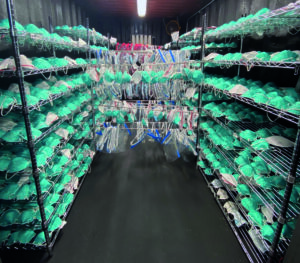
Although most emergency plans call for patients to be decontaminated before entering a hospital, there is always the prospect of contaminated walk-in patients arriving, or patients evacuated to hospital unknowingly in a contaminated state. The ability to decontaminate arriving patients is important, and new construction and hospital retrofits often take this into consideration. However, effective provision of such decontamination varies widely around the world. In some cases, it relies on emergency services, such as the fire brigade, to conduct temporary decontamination.
Within hospitals, there are an increasing number of sophisticated items of sensitive electronic equipment. Historically, decontamination of electronics has been a troublesome issue, in both medical and non-medical settings. Cristanini (Italy) has had its SX-34 product on the market for some time, and it can be used on computers, monitors, diagnostic equipment, and other sensitive items. Steris (USA) also has capabilities in this regard. Long an industry leader in healthcare sanitation, their VHP (“vaporised hydrogen peroxide”) systems can be used for many categories of sensitive equipment.
Major incident, not to mention pandemics, can see situations where entire rooms or wards require decontamination. Such decontamination can be labour-intensive. But it also has proved to be lucrative business for contractors. Numerous companies, some of which are long-standing service contractors and others new players, are now widely marketing their services.
Pharmaceuticals
Work continues on medicines that might be useful in clinical settings for various illnesses and injuries caused by CBRN exposure. Traditionally, there have been drugs available for immediate treatment of nerve agents and cyanides in field settings. The other CBRN threats are generally not amenable to field administration of medicines. The nerve agent and cyanide treatments are generally generic medications. Autoinjectors have been available with atropine and oxime-class drugs for rapid field treatment of nerve agent poisoning for decades. Incidentally, these are the direct ancestor of widely available epinephrine pens for severe allergic reactions. Meridian Medical Technology (USA) has been a leader in that space for decades. Getting nerve agent antidotes out of the military into civilian settings has taken some time and regulatory work, but emergency medical providers in many countries now have access to them.
Some work has progressed in the area of drug therapy for chemical warfare agents, but it is generally in the USA where this activity has had the most progress in transition into actual products for use in field or in hospital. An exception to this is the “Cyanokit” – Meridian’s field kit for administering hydroxycobalamin. Although the time window for effective use of this drug is narrow (minutes) after exposure, this drug can be lifesaving in the event of warfare or terrorism using hydrogen cyanide.
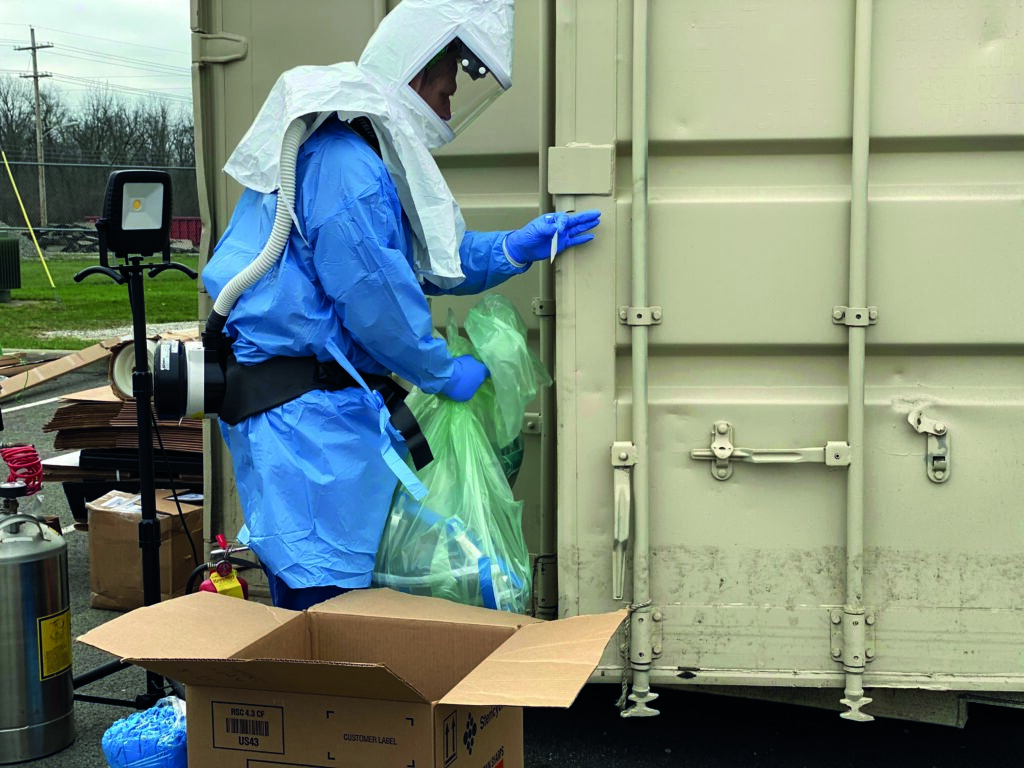
Several developments have come up in the area of nerve agent treatment. Although the main drug for nerve agent exposure is atropine, a commonplace generic, it is often accompanied by an “acetylcholinesterase reactivator” such as obidoxime or pralidoxime.
Significant work is being done on drugs that are an improvement in this class. Work is also being done on anticonvulsants as some have shown that, in laboratory studies, that they can prevent or mitigate long-term damage in nerve agent poisonings. Drugs such as ketamine and midazolam have been fielded or are under investigation. In the area of blister agents (such as so-called “mustard gas”), “Silverlon” dressings made by Argentum (USA) have been investigated for their usefulness.
“Bioscavengers” are chemical compounds that can attach themselves to nerve agents in human tissue, thus limiting the degree of injury they cause to the body. Some of these chemicals (such as butylcholinesterase) have been shown in laboratory studies to be useful in situations where nerve agent exposure has been gradual, such as exposure through the skin. (It should be noted that the Salisbury poisonings were all skin exposure cases.) BIoscavengers could also be useful as a prophylactic before exposure, although the history of pre-treatment against nerve agent exposure is troublesome. This is certainly an area to watch for future developments.
So-called “chelating agents” are useful for treating some types of radiation exposure by helping to remove radiological isotopes from the body. Some work has gone into “radioprotectants” such as high-dose Vitamin E to help protect the human body from radiation damage, but this work still languishes in research stages. One development in recent years has been the approval by the US Food and Drug Administration of the drug filgrastim as a treatment for radiation exposure.
In the biological warfare and terrorism space, much concern is still attached to anthrax, as it is, in many ways, an ideal biological warfare agent. Emergent Bio Solutions has come up with a pair of useful medications for use in pulmonary anthrax illness. “Anthrasil” is an immune globulin and “Raxibacumab” is a human monoclonal antibody. Both are highly useful, in conjunction with antibiotics, in treating pulmonary anthrax. Earlier in this correspondent’s career it was thought that, once serious symptoms had set in, pulmonary anthrax was generally lethal. However, advances such as the Emergent product have changed the situation with one of the leading biological warfare threats.
Another serious bioterrorism and biowarfare threat is botulinum toxin. Although antitoxins have existed for many decades, they had various limitations. A US programme run by the Biological Advanced Research and Development Authority (BARDA) has resulted in an improved “heptavalent” antitoxin for treating botulism victims. This has received regulatory approval. Likewise, some bioterrorism threats are bacterial in nature, so are theoretically treatable with antibiotics. However, nobody really knows where the next threat in this area may come from. Some research efforts, including BARDA’s “Combating Antimicrobial Resistant Bacteria” (CARB) programme, seek to develop broad-spectrum drugs that could be useful against multiple threats.
Regulatory Approval
Readers familiar with the pharmaceutical industry will understand that, just because a scientist has invented a new possible medicine, it will not always be available for us. The phrase “regulatory approval” has already been mentioned several times. For decades at conferences on this subject, that phrase could be rightly used to quell discussion or cause disorder in meetings. Medicines, devices, decontamination solutions, and similar “medical countermeasures” are regulated quite heavily in most countries around the world. There is usually a two-tiered system, wherein military doctors and other medical providers treating military personnel have less of a regulatory burden than doctors providing care to regular civilians. As an example, a soldier in the US Army can give a nerve agent antidote injector to another soldier, it is most likely not legal for that soldier to administer such prescription medicines to a civilian.
Regulatory approval for civilian use can take a very long time to achieve, as lengthy studies are required. Some manufacturers do not see CBRN threats as much of a market motivator and often do not want to spend the time or funds to pursue a lengthy regulatory process. Cumbersome regulatory approval has long been seen in the CBRN community for what it is – an obstacle that could cost lives in an emergency. The US and other countries have worked out expedited regulatory approval schemes for medical countermeasures against CBRN threats and there are now faster routes to approval that have been developed to speed up the action while not sacrificing safety.
Diagnostics
An area where there is still much work to be done is in the area of diagnostics. Nearly all field care and much of the hospital-level care is done based on medical diagnosis of signs and symptoms. Laboratory results and toxicology can take days, by which time an acutely ill patient could be dead. Not every CBRN threat is easily discerned by external observation.
While nerve agents and blister agents have distinct signs, phosgene exposure or viral illnesses may not be easily comprehended.
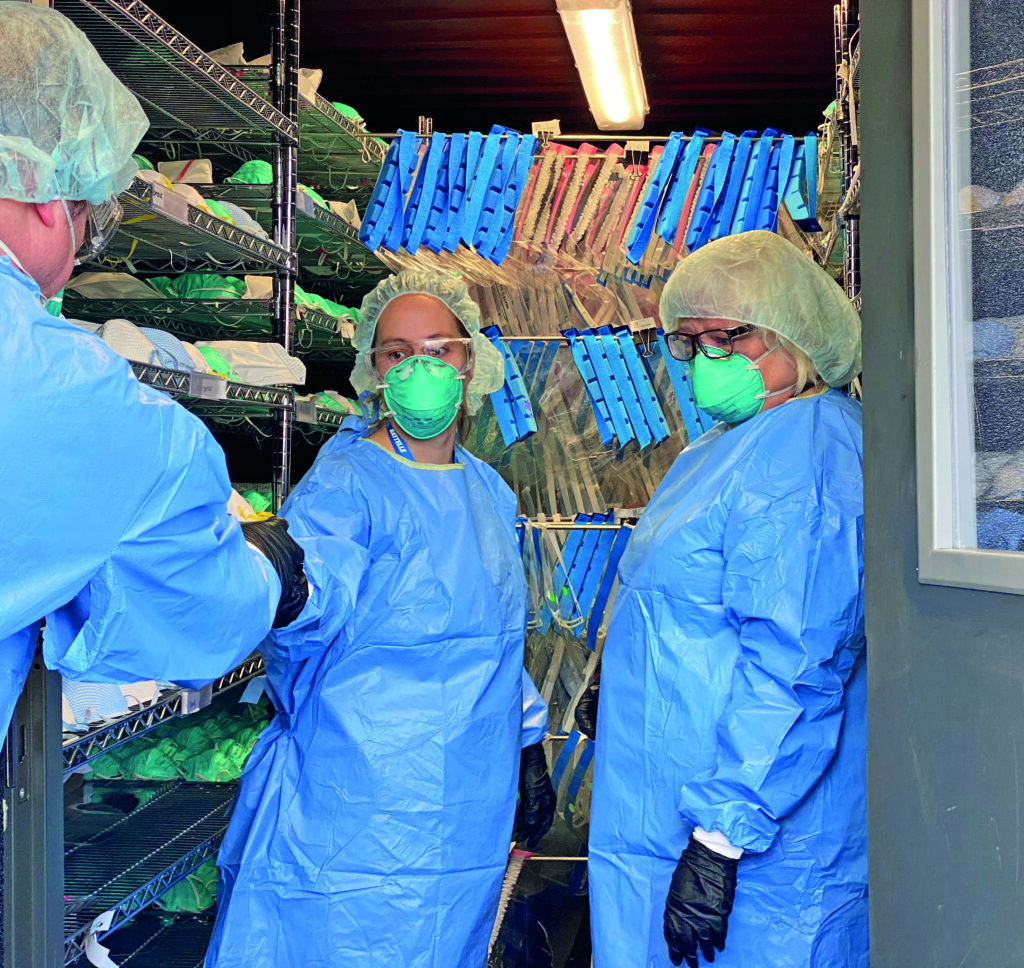
While there is a good deal of equipment in the detection and identification space for chemical (see previous numbers of this magazine) and radiological spaces, medical responders are usually reliant on specialised teams for such gear. More could be done to train field medics in use of such equipment (along the lines of UK’s HART, already mentioned above). Biological diagnostics, particularly instrumentation useful in the field, continue to elude the market. However, the general tendency in biological weapons is that they have incubation periods, so diagnosis is left for traditional laboratory work in hospitals.
Logistics and Stockpiling
Medical responders need equipment. That equipment comes from logistical channels, supply chains, and (often) emergency reserve stockpiles. The worldwide drama over PPE and the COVID-19 pandemic shows that the unglamorous businesses of supply, logistics, and stockpiling are important. Both mundane and specialised medical items will get expended at unduly fast rates during CBRN crises. From the logistical perspective, a pandemic is really just a “B” crisis. With the appropriate effort, the COVID-19 crisis provides a useful set of lessons on how to manage stockpiles and supply chains for catastrophic events. Efforts to renew, expand, and replenish CBRN medical stockpiles would be important for readiness and resilience, but also as commercial opportunities for companies in this sector.
An important component of the logistics underpinning military medicine and military field hospitals is the provision of clean water. This is particular important in CBRN situations, as much decontamination is water-based. This correspondent discussed military water purification in this magazine at length in 2019, and much of that article is relevant to military medicine. Some new developments have occurred in this area since the previous article. Icon Lifesaver (UK) has come up with innovative techniques to incorporate graphene technology to purify water. This technology shows prospect for water purification techniques and products that require little or no power. The electrical power requirements behind many water purification products can be a real logistical issue for field hospitals, so improvements in this area are welcome.
New Advances
Medical countermeasures are an area where the major countries in the CBRN space acknowledge that there are weaknesses. The major investments appear to be in the US, largely through BARDA, and in the European Union, through a variety of expenditure paths, including Horizon 2020 and the European Defence Industrial Development Programme.
CBRN medicine is an area where clever ideas out of science, industry, and academia can find grants if there is enough initiative to work through the proposal processes.
Progress can also be expected from the COVID-19 effort. For example, expedited vaccine developments and work into antiviral drugs has been proceeding at a frantic pace. While this work is directed at COVID-19, some of this work will have benefits against other threats.
Dan Kaszeta is Managing Director at Strongpoint Security Ltd. and a regular contributor to ESD.




